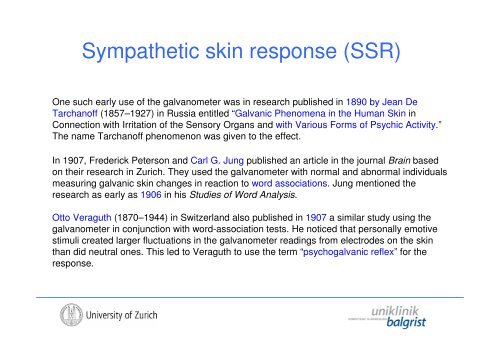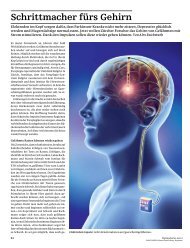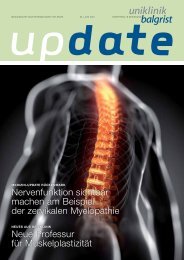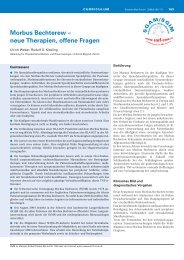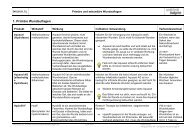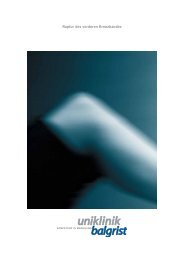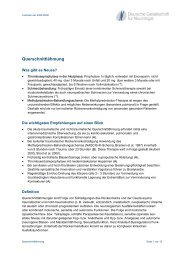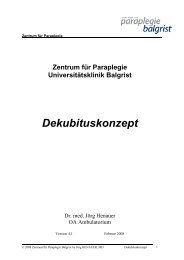The Autonomic Nervous System in Human SCI - Uniklinik Balgrist
The Autonomic Nervous System in Human SCI - Uniklinik Balgrist
The Autonomic Nervous System in Human SCI - Uniklinik Balgrist
You also want an ePaper? Increase the reach of your titles
YUMPU automatically turns print PDFs into web optimized ePapers that Google loves.
Sympathetic sk<strong>in</strong> response (SSR)<br />
One such early use of the galvanometer was <strong>in</strong> research published <strong>in</strong> 1890 by Jean De<br />
Tarchanoff (1857–1927) <strong>in</strong> Russia entitled “Galvanic Phenomena <strong>in</strong> the <strong>Human</strong> Sk<strong>in</strong> <strong>in</strong><br />
Connection with Irritation of the Sensory Organs and with Various Forms of Psychic Activity.”<br />
<strong>The</strong> name Tarchanoff phenomenon was given to the effect.<br />
In 1907, Frederick Peterson and Carl G. Jung published an article <strong>in</strong> the journal Bra<strong>in</strong> based<br />
on their research <strong>in</strong> Zurich. <strong>The</strong>y used the galvanometer with normal and abnormal <strong>in</strong>dividuals<br />
measur<strong>in</strong>g galvanic sk<strong>in</strong> changes <strong>in</strong> reaction to word associations. Jung mentioned the<br />
research as early as 1906 <strong>in</strong> his Studies of Word Analysis.<br />
Otto Veraguth (1870–1944) <strong>in</strong> Switzerland also published <strong>in</strong> 1907 a similar study us<strong>in</strong>g the<br />
galvanometer <strong>in</strong> conjunction with word-association tests. He noticed that personally emotive<br />
stimuli created larger fluctuations <strong>in</strong> the galvanometer read<strong>in</strong>gs from electrodes on the sk<strong>in</strong><br />
than did neutral ones. This led to Veraguth to use the term “psychogalvanic reflex” for the<br />
response.


